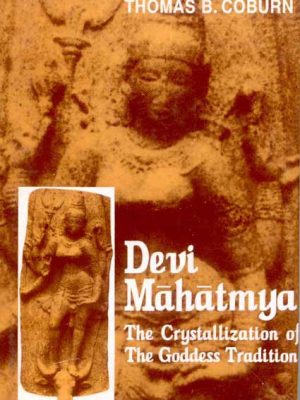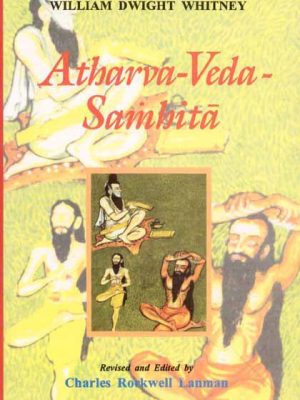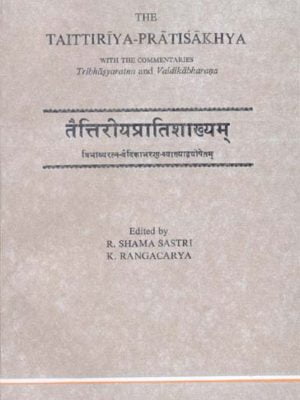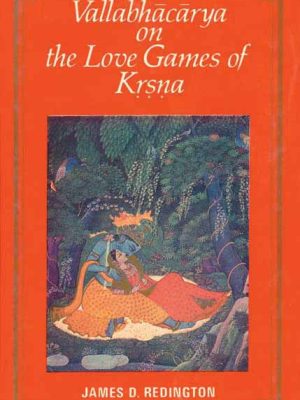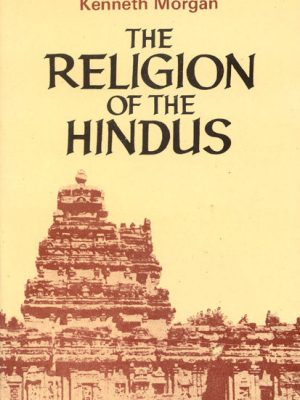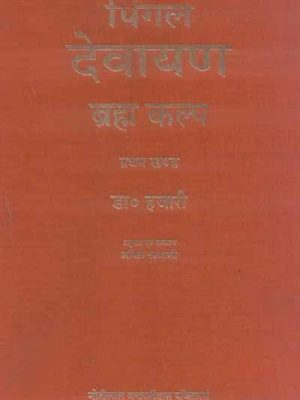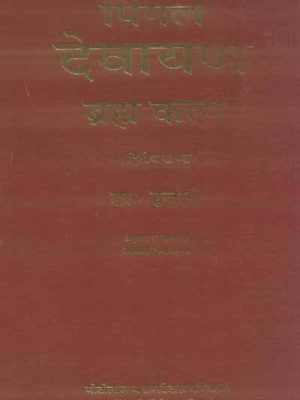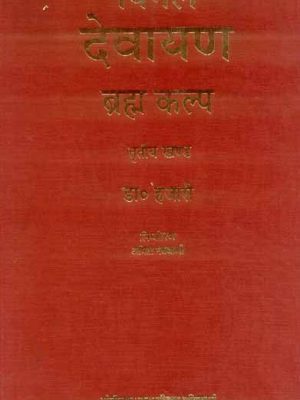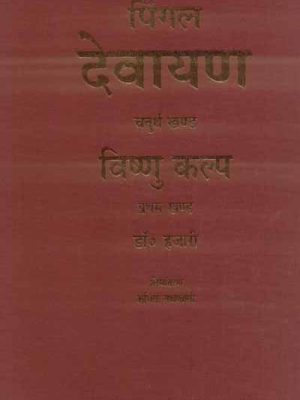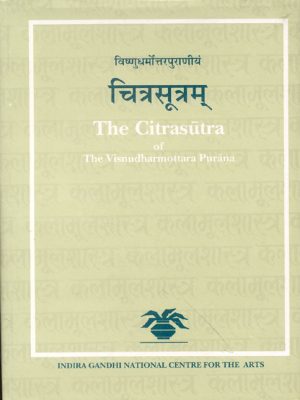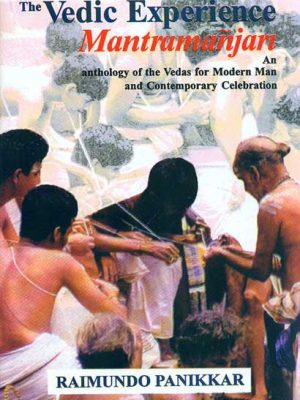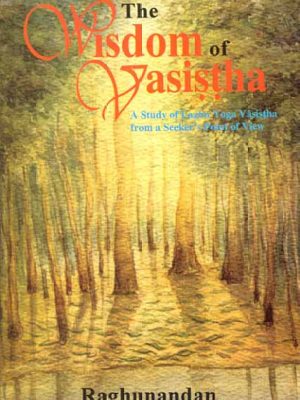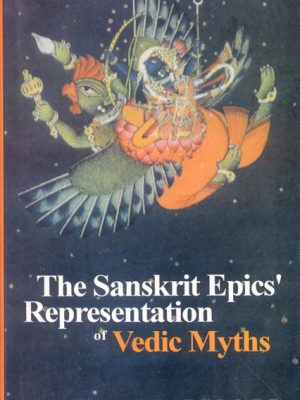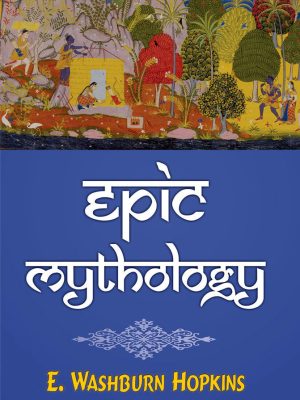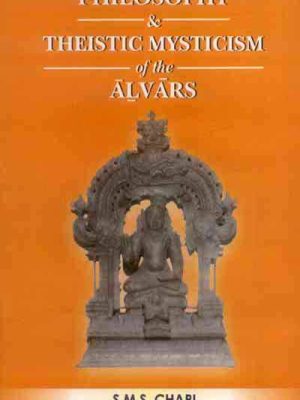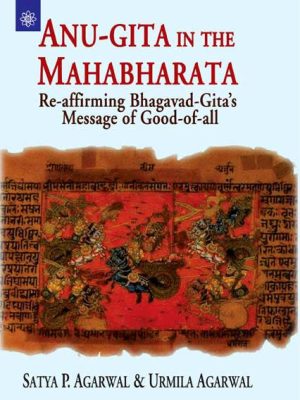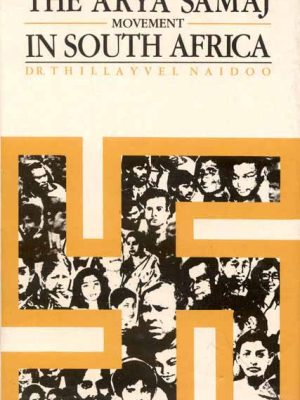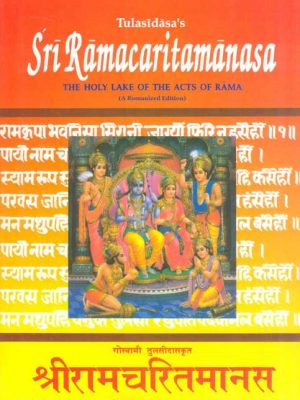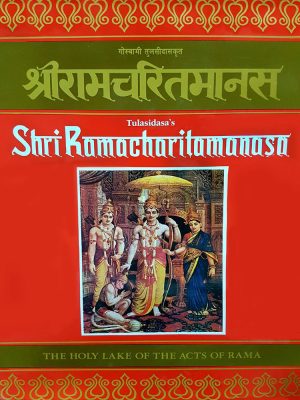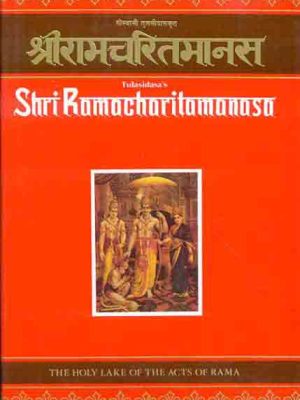Hinduism
-
Devi Mahatmya: The Crystallization of the Goddes Tradition
Devi Mahatmya: The Crystallization of the Goddes Tradition
Both worshippers and academics of the Indian Great Goddess know the Devi-Mahatmya. It’s the earliest Sanskrit narrative of the Goddess and remains fundamental to the Goddess (Sakta) tradition. Like much in that tradition, the book eluded historical examination until today.
The central task here is to explore how an anonymous Sanskrit text
articulates a view of ultimate reality as feminine when there is virtually
no precedent in the Sanskrit tradition for such a view. To accomplish this
task, an appropriate method of scriptural analysis is developed. This
involves an examination of Hindu understanding of the Puranas in general,
and of the Devi Mahatmya in particular, along with consideration of several recent scholarly discussions, in india and elsewhere. Subsequently, a comprehensive inquiry into the Goddess’s epithets in this text is undertaken, followed by examination of the earlier history of the myths that the Devi-Mahatmya associates with her. The study culminates in
translations of the text’s hymns, which are annotated so as to indicate the
synthesis that is here being accomplished. The resulting illumination of
Sanskritized form of Goddess worship is what Daniel H.H. Ingalls calls in
his Foreword “a notable scholarly achievement”
Authored by
Thomas B. Coburn
About the author
Thomas B. Coburn is currently serving as the Charles A. Dana Professor of Religious Studies and has accumulated a significant number of scholarly works.
₹695.00 -
Atharva-Veda-Samhita (2 Vols.)
Atharva-Veda-Samhita
‘the Atharvan Veda’ or ‘the Magic Formula Knowledge.’ For ethnologists and religious historians alike, the Atharva-veda Samhita holds great significance because it is a treasure trove of information about ancient Indian popular beliefs, such as the belief in countless spirits, imps, ghosts, and demonic entities of all shapes and sizes, as well as the practise of witchcraft. There are critical notes on the text and readings of Paippalada of Kashmere version provided by the late Professor Rothfurter, as well as notices of similar passages in all other Vedic texts and data from Hindu scholars regarding authorship, divinity, and metre for each verse, as well as references to anciallary literat. This work includes all these things.
About the Author(s)
₹1,495.00Atharva-Veda-Samhita (2 Vols.)
₹1,495.00 -
Taittiriya Pratisakhya
Taittiriya Pratisakhya
It was an innovative piece of work, and it should have been reviewed with that mindset in mind. According to Renou (1969), Bohtlingk’s version of the Astadhyayi was believed to be the standard edition in Europe. This information comes from the author. It was the cause of something that might be termed a “revolution” in linguistic thought, and it was accountable for this revolution in both Indo-European linguistics and general linguistics. The study of the history of Indo-European languages was sparked in part by the analysis of Sanskrit grammar, which served as a stimulant for the subject. It was the first time in the history of linguistics that it was understood that a word could be cleanly split down into root, stem-forming suffix, and desinence. [Citation needed] [Citation needed] The Bohtlingk edition was the first one to become widely accepted as the norm, and it remained so until more recent versions were published that included more in-depth exegetical interpretations.
About the Author(s)
William Dwight Whitney
₹495.00Taittiriya Pratisakhya
₹495.00 -
Vallabhacarya on the Love Games of Krsna
Vallabhacarya on the Love Games of Krsna
Vallabhacarya on the Love Games of Krsna this book provides a translation of a classic commentary on the six chapters of Book 10 of the Bhagavata Purana that chronicle Krsna’s love games with the Gopis. The original commentary was written in Sanskrit, and this book includes a translation of the Sanskrit text. The commentary is known as the Subodhini of Saint Vallabhacarya, who was the originator of the tradition. It begins with an explanation of Vallabhacarya’s essential viewpoints on the love games, which can be found in the introduction.
About the Author(s)
James D. Redington
₹795.00 -
The Religion of the Hindus
The Religion of the Hindus
The Religion of the Hindus concepts of samsara, which refer to the never-ending cycle of life, death, and rebirth, and karma are central to the Hindu worldview (the universal law of cause and effect). “Atman,” which translates to “soul,” is one of the most fundamental concepts in Hinduism. According to this school of thought, all living things possess a soul, and together, these souls make up the one, ultimate soul. The term “Hindu” is really an exonym, and despite the fact that Hinduism is considered to be the oldest religion in the world, many Hindu adherents refer to their faith as “Santana Dharma.” A Hindu classic reprinted. Essays about Hinduism and ritual by ardent Hindus. An intro.
Authored by
Kenneth W. Morgan
About the Author(s)
KENNETH W. MORGAN lived in Ramakrishna Mission Ashrams in India. He served
as Director of Chapel House and of the Found for the study of World
Religions. He became Professor of Religion, Emeritus, at Colgate University
in 1974.
₹295.00The Religion of the Hindus
₹295.00 -
Pingal Devayan (Vol. 1): Brahma Kalpa (Vol. 1)
Pingal Devayan (Vol. 1): Brahma Kalpa (Vol. 1)
The first volume contains coverage of five different mandalas (books). Pingal Devayan (Vol. 1): Brahma Kalpa (Vol. 1) The Book of the Gods (the Book of the Deva), the Book of the Sages (the Book of the Rishi), the Book of Sacrifice (the Book of Yagna), the Book of Divine Powers (the Book of Biti), and the Book of Pragatha (son of Rishi Kanwa). In Deva Mandala, the manifestation of the epic, the beginning of creation, the births of gods and demons, their battles, the birth of Satyadev, the God of Truth, and the formation of the Time Wheel are all described. In the Rishi Mandala, the life of the sage Vashishta and the devastation caused by the sage Vishwamitra are both recounted in detail. It also discusses the activities of the shadowy powers of the night, known as Nakta, as well as the formation of the psychic entity known as Bitihotra. The Yagna Mandala tells the story of how the wise people asked Agni, the god of fire, for assistance in initiating a sacred sacrifice to call forth Satyadev, the god of truth, who had vanished from the world because of the influence of evil forces. These chants are hymns to the mystic fire, and their purpose is to restore truth to the process of creation. The Biti Mandala is a narrative that describes the capabilities of the celestial deities as well as the cleansing that the Bitihotra provides (psychic being). Following the completion of the cleansing process, the psychic being will identify with the Truth. This takes place in the presence of the holy trinity, which consists of Brahma, Vishnu, and Maheshwara, as well as other godheads, sages, and the four divine energies, which are known as Maheshwari, Mahakali, Mahalakshmi, and Saraswati. The Pragatha Mandala provides an account of Kanwa rishi’s family as well as the union of Pragatha, Kanwa’s son, and Gathini. They are Kali, the goddess of the Iron Age, who sprang from their offspring. The book goes into great depth about Kali’s upbringing and the events that lead to his becoming an anti-god. The tale of the birth of Trita and Dwita, sons of Rishi Aptya, who would limit the impact of Kali in Satyadev’s absence is also featured. Trita and Dwita would do this during.
Author
Dr. Hazari
₹995.00 -
Pingal Devayan (Vol. 2): Brahma Kalpa (Vol. 2)
Pingal Devayan (Vol. 2): Brahma Kalpa (Vol. 2)
India, the beginning of each new era is traditionally marked by the composition of an epic. The history makes this quite clear. Pingal Devayan (Vol. 2): Brahma Kalpa (Vol. 2) The Ramayana was written down at the time before the transition from the Silver Age to the Bronze Age. Before the end of the Bronze Age and the beginning of the Iron Age, the Mahabharata was written. Now that the Iron Age is drawing to a close and the Golden Age is getting closer, a new epic known as Devayan has begun to take shape. In contrast to the previous two epics, Devayan does not only inform us of the impending arrival of the Golden Age. In its place, it provides an account of the whole of the human cycle, which spans 26,000 years and encompasses the Golden, Silver, Bronze, and Iron Ages. It is written in the Anusthupa metre, which is the traditional Indian epic metre, and comprises of thirty-two books that are each split into twelve volumes. Each volume has one thousand pages. It covers the “beginning and the creation of the cosmos,” as well as the whole of the history of the globe throughout the four eras, up to and including the Golden Age that is about to begin. This is the era of the supramental awareness that Sri Aurobindo envisioned while he was writing. In the future, man will develop into a creature with an entirely different and divine awareness that is founded on the teachings presented in the Vedas. The venerable Indian custom is being practised today.
Author
Dr. Hazari
₹995.00 -
Pingal Devayan (Vol. 3): Brahma Kalpa (Vol. 3)
Pingal Devayan (Vol. 3): Brahma Kalpa (Vol. 3)
The Vijnanavadins have always been understood to have the belief that there is an Absolute. Pingal Devayan (Vol. 3): Brahma Kalpa (Vol. 3) thomas Wood conducts an investigation to determine the accuracy of the characterisation to what degree it applies. Dr. Wood reveals that the philosophical ideas of the Vijnanavadins were in reality equivocal, and in some instances even inconsistent, by conducting an in-depth investigation of several of the Vijnanavadins’ most important literature. This monograph is targeted primarily toward scholars of Indian philosophy and religion who have an interest in the schools of Mahayana Buddhism and in its doctrinal relation to Vedanta. However, due to its treatment of philosophical topics of universal interest, such as idealism, solipsism, and the nature of the inference to other minds, it is also of interest to Western and comparative scholars.
Author
Dr. Hazari
₹1,500.00 -
Pingal Devayan (Vol. 4): Vishnu Kalpa (Vol. 1)
Pingal Devayan (Vol. 4): Vishnu Kalpa (Vol. 1)
The Milinda Panha is a notable piece of Buddhist literature that was most likely produced in the first century before the common era. There is solid explanation for this. It offers Buddhist philosophy in a style that is exceedingly appealing and easy to remember in the form of a conversation between a Bactrian Greek monarch named Milinda, who plays the role of the “Devil’s Advocate,” and a Buddhist teacher named Nagasena. The majority of the issues that are often posed by Westerners are addressed, such as “If there is no soul, what is it that is reborn?” and “If there is no soul, who is talking to you now?” The themes that are discussed encompass most of these concerns. This masterwork of Buddhist literature is presented in a manner more suitable for modern readers thanks to this abridgement. The introduction provides a summary of the historical context in which the discussions took place, highlighting the collision of two significant cultures: that of ancient Greece, on the one hand, and the Buddhism of the Indus valley, which was a legacy left by the great Emperor Asoka, on the other. It is intended that the readers would be encouraged to read more from the translations of the Pali texts by the inclusion of suitable references, a glossary, an index, and a list of Pali quotes.
Author
Dr. Hazari
₹3,000.00 -
Citrasutra of the Visnudharmottara Purana
Citrasutra of the Visnudharmottara Purana
“It Has Been Beautiful Produced……. Citrasutra of the Visnudharmottara Purana the Book Presents Intersting Readings as It Includes all the Information Given By The Previous Scholars And Other Texts Regarding the Use And Interpretation Of Technical Terms,Techniques Of Painting And Its Classification.The Author Has Been Successful In The Task She Sets Before Herself To Present A Thoughtful Interpretation Of A Text And The Underlying Aesthetic Theory Of Indian Art And Its Relevance Today.
The author contends that these pieces only make sense when placed inside a framework, which must by definition be contingent, which runs counter to the conventional wisdom that the past may be accessed by us in an unmediated manner via the sacred parts of the texts.
The Citrasutra, which is made up of nine adhyayas or chapters and can be found in the third khanda of the Visnudharmottara Purana, is presented as a work that has been “discovered” and interpreted in a variety of ways in the introduction. As a consequence of this, it has a lengthy history of interpretation that has been contributed to by some of the most influential art historians of the 20th century, such as A. K. Coomaraswamy, Stella Kramrisch, and C. Sivaramamurti. The concerns of art historians, which are bound up with themes of Indian identity and the building of an authentic past, are the source of the interest in the book. This has sparked interest in the work.
Author
PARUL DAVE MUKHERJI
₹1,495.00 -
The Vedic Experience Mantramanjari: An Anthology of the Vedas for Modern Man and Contemporary Celebration
The Vedic Experience Mantramanjari: An Anthology of the Vedas for Modern Man and Contemporary Celebration
The Vedic Experience Mantramanjari: An Anthology of the Vedas for Modern Man and Contemporary Celebration. One of the most stupendous manifestations of the Spirit is undoubtedly that which has been handed down to us under the generic name of the Vedas. The Vedas are still too much neglected not only in the world at large but also in their country of origin. this Vedic anthology will make direct and fruitful knowledge of the Vedas available to a wider range of people than the small elite of pandits and Indologists.
This anthology collects the most crucial texts of the Indian Sacred Scriptures–in all more than 500–newly translated into contemporary English. Dr. Panikkar’s principle has been to select and place together texts so as to offer a selection of texts that cover the full range of ‘The Vedic Experience’ and at the same time to show how they manifest the universal rhythms of nature, history, and Man. Excerpts are taken from the oldest hymns, such as the Rig Veda; from the Brahmanas, the Aranyakas, or “Forest Treatises,” and finally the Upanishads, which represent the mystical and philosophical culmination of the Vedas.
This is a book for meditation, for reading, public and private, as well as for thorough study at this wellspring of human wisdom. It should, moreover, facilitate that meeting of East and West so long desired and delayed, and now so imperative
Author
Raimundo Panikkar
₹2,000.00 -
The Wisdom of Vasistha: A Study on Laghu Yoga Vasistha from a Seeker’s point of view
The Wisdom of Vasistha: A Study on Laghu Yoga Vasistha from a Seeker’s point of view
Yogavasistha or Yogavasistha Maharamayana has been a guide book to earnest Sadhakas, all over the country. The popularity of this book appears to be due to the fact, that it is a happy combination of terse Upanisadic thought clothed in the story form. The Wisdom of Vasistha: A Study on Laghu Yoga Vasistha from a Seeker’s point of view A scripture becomes relevant, when it gives the truths of the Upanisads, using a common man’s language with illustrative stories, helps a beginner as well as an advanced seeker. It is believed by some that Sage Valmiki wrote the Ramayana for the purification of mind and to create a mood of seeking in the society. It is well known, that the story of Sri Rama, gives an exemplary ethical and moral behaviour in an individual, and a glimpse into the ideal culture, through the description of Ayodhya. For only on a strong ethical and moral foundation can one hope to build the super-structure of spirituality. Attempt has been made to cover all the stories in six Prakaranas. This book is a study by a seeker, and an attempt to present the philosophy, and practical hints contained in the book, to fellow seekers who are not very familiar with Sanskrit. It is essentially meant for inspiring the seekers to take up the study of the original text, which is a mine of practical wisdom. The essays contained herein, are glimpses into the meditations on the golden verses and their connection and relevance in our day-to-day life. Consequently, the interpretation and the perspective is not really meant for scholastic pursuits.
Author
Raghunandan
₹3,000.00 -
The Sanskrit Epics Representation of Vedic Myths
The Sanskrit Epics Representation of Vedic Myths
As the name of this research project, “The Sanskrit Epics’ Representation of Vedic Myths,” suggests, my objective is to investigate the manner in which certain myths that are first presented (as far as India is concerned) in the Vedas, and more specifically in the Rgveda, are retold in the Sanskrit Epics, the Mahabharata and the Ramayana, and to investigate the manner in which the Epics re-use the mythological material Before we go any further, I will first provide a concise synopsis of the type, contents, and dates of the documents that were discussed earlier in this paragraph. The various passages ‘holy speech’ is what the phrase’mantra’ or ‘brahman’ meant when it was first used, and the name ‘Veda’ referred to the earliest layer of literature in the Sanskrit language. According to later Indian tradition — in particular, according to the Mimamsa, which is a school of Vedic exegesis — the Veda is eternal and authorless, and it was a’revea1d’ to the Vedic rsis or seers. Other names for the Veda include the sruti, which can be translated as “that which has been heard,” or the “revelation.” The Veda is composed of many layers of writings; the earliest of these are known as the Samhitas, which literally translate to “collections.” There are four different Samhitas. The Rgveda Samhita, also known as the “collection of poems,” is the earliest of the four. It was written between 1500 and 1000 BCE and is organised into ten mandalas, also known as books. The tenth mandala is often believed to be a more recent addition to the collection in comparison to the other nine mandalas.
Author
DANIELLE FELLER
₹795.00 -
Epic Mythology
Epic Mythology
The study of the Indian epics the Ramayana and the Mahabharata is given a fresh perspective with the publication of this collection. In it, for the very first time, mythology is separated from the overarching themes that run throughout both of the epic books. Within a few hundred years of the start of the Christian era, the people who lived in Northern India along the Ganges believed the mythology that is described in India’s two epics to be representative of their general worldview. The time period covered by the Mahabharata is from 300 B.C. to 400 A.D. In its entirety, the Mahabharata was written much later than the Ramayana, which is both more technically accomplished in its metre and the product of a single author. The more brutal epic style of the Mahabharata depicts a life that is more civilised than the one seen in the Ramayana. It is also the product of the combined efforts of many people over a long period of time.
Epic mythology is, however, is fairly consistent. There is no great discrepancy between the character of any one god in the Mahabharata and that of the same god in Ramayana. Nor is the character of gods very different in different parts of the Mahabharata, save for the sectarian tendency to invert the positions of the three highest gods in favour of the sect.
Author
Edward Washburn Hopkins
₹595.00Epic Mythology
₹595.00 -
Philosophy and Theistic Mysticism of the Alvars
Philosophy and Theistic Mysticism of the Alvars
Alvars, the twelve Vaisnava saints of South India, who lived between the fifth and eighth centuries A.D., constitute a key era of Vaisnava philosophy and religion that laid the groundwork for the development of Visistadvaita Vedanta in the hands of Ramanuja and his renowned successors. Philosophy and Theistic Mysticism of the Alvars Four thousand devotional Tamil songs, collectively known as Nalayira-Divyaprabandham, full of philosophical and theological lessons, have been left to future generations as a rich legacy. A systematic presentation of these principles is presented in this work, without the development of theological and sectarian perspectives that were formed by commentators after Ramanuja. A thorough examination of the Alvars’ philosophy and mysticism based on the original source material is presented, with textual authority fully cited, under six broad headings: doctrine of ultimate reality (paratattva); god (Isvara); individual self (Jivatman); practise (Saddhana); and the supreme goal (parama-purusartha); and theistic mysticism. For the first time in English, a full and authoritative account of the Alvars’ philosophy and mysticism can be found in this work. For anyone interested in learning more about Vaisnavism and the Alvar sect, this book is a must-have for comparative religion majors.
Author
S.M. Srinivasa Chari
₹695.00 -
Anu-Gita in the Mahabharata: Re-affirming Bhagavad-Gita’s Message of Good-of-all
Anu-Gita in the Mahabharata: Re-affirming Bhagavad-Gita’s Message of Good-of-all
The purpose of writing this book is to make available to English-knowing readers, an easyto-read version of Anu-Gita. Although Anu-Gita is an important part of the Maha-bharata, it has so far not been presented in a simple form to common people, with the result that most people do not even
know that such a book exists. The prefix ‘Anu’ denotes ‘after’, so Anu-Gita literally means ‘Gita occuring after’. In the Mahabharata, Bhagavat-Gita occurs in Parva No. 14. (In all, there are 18 Parvas in the Mahabharata).
It is well known that the Gita was taught by Lord Krishna to Arjuna on the battle field of
Kuruksetra. So it was a time of crisis at the time of Anu-Gita. In fact, the Mahabharata war was over and peace was established in the Kingdom, under the rule of Yudhisthira (whom every one including Arjuna supported).
But the format of Anu-Gita is different from that of the Gita. In the Gita, there was dialogue between Krishna and Arjuna. On the other hand, in Anu-Gita, Krishna makes use of three ancient
dialogues. Because of this, Anu-Gita has a lot of repetitions, which have made it longer than the
Gita. For example, Anu-Gita has thirty-six chapters (compared to eighteen chapters in the Gita), and 1040 shlokas (compared to 700 shlokas in the Gita). In order to present Anu-Gita in an easy-to-read version, the authors have omitted the repetitions, and have selected 400 shlokas. But they have retained all the main teachings of Anu-Gita.
Most people (even in India) have not heard the name of Anu-Gita. This is so because, although Anu-Gita is an important part of the Mahabharata, no scholarly study of it, in a simple language, has so far been published. This gap will be filled by this pioneering book, which explains under what circumstances was the Gita taught by Lord Krishna to Arjuna, for the second time. This book is divided into two parts. Part I presents the Sanskrit-shlokas of Anu-Gita, along with their translation in simple English. Part II explains the main points of similarity, as well as dissimilarity, between Gita and Anu-Gita.
Author
Satya P. Agarwal
₹250.00 -
Arya Samaj Movement in South Africa
Arya Samaj Movement in South Africa
Even though it is primarily a religious organisation, the Arya Samaj movement emerged as a significant player in India’s fight for social and cultural autonomy, which involved both religious and secular groups. It was established in 1875, foreshadowing the establishment of an independent India in 1947. This work makes no attempt to provide a detailed
investigation of the movement, but also presents a summary of its development and philosophy in the context of the contributions made by its founder, Swami Dayanand Sarasvati. There is a lot of reason to be proud of the Samaj’s complex of institutions and upliftment programmes that they started, as well as the major historical forces that played a role in shaping the movement.
The nineteenth century saw the beginning of a number of different socio-religious groups, one of which was the Arya Samaj. Despite this, it was responsible for the construction of many of the most prestigious educational institutions in northern India. Indian groups who had immigrated to other countries, such as Mauritius, South Africa, and Guyana, were among the first to feel the impact of these events. What was once a little religious group has now grown into a religious denomination that has significant weight in the world today. One of the Arya Pratinidhi Sabhas may be found in South Africa.
the most well-known Hindu organisations that have a significant amount of sway over the north Indian subset of the Hindu people.
Author
T. Naidoo
About the Author
Originally from Johannesburg, South Africa, Dr. Thillayvel Naidoo went to school and graduated as a teacher. A graduate of the University of South Africa, he moved to India to pursue his M.A. in Indian Philosophy at the University of Madras. Research Officer at the University of Durban-Department Westville’s of Science of Religion. He is presently a professor of Philosophy of Religion at the university where he earned his doctorate. On Hinduism, he is the author of many publications on the subject: The Hindu Way, Sai Baba: An Analysis of Manifestations, The Parsee Community in South Africa, and Tamil People in South Africa.
₹200.00 -
Tulasidasa’s Sri Ramacaritamanasa: The Holy Lake of the Acts of Rama (A Romanized Edition)
Tulasidasa’s Sri Ramacaritamanasa: The Holy Lake of the Acts of Rama (A Romanized Edition)
The SHRI RAMACHARITAMANASA by Tulasidasa is the single most popular book among Hindus. This book has a huge appeal to the affluent and the poor, the learned and the uneducated, the elderly and the young, and the scholar and the ordinary man. It has done so for over four centuries. This one-of-a-kind version of the Ramacharitamanasa, which also includes the original text written by Tulasidasa as well as verse-by-verse translations into Hindi and English, was created with the goal of satisfying the growing interest that people have in epic literature. The translation that was done by a skilled academic does the original work justice in terms of its inherent depth and complexity. It has been crafted with the intention of being of help to Indian brothers and sisters who now reside outside of India and for whom Tulasidasa’s original may have been written in a dialect that was difficult to understand. A regular and genuine copy of the Ramacharitamanasa has been in high demand among the enormous Indian population that has relocated outside of India for a significant amount of time. This particular version is distinguished by the incorporation of Lavakushakanda, Shri Hanumanchalisa, and Shri Ramashalaka Prashnavali as one of its key features. Special care has been taken for making it useful to the Indian brethren living abroad to whom the dialect of Tulsidasa’s original may be somewhat incomprehensible. There has been a long-standing demand from the vast Indian community settled abroad for a standard and authentic edition of the Ramacharitamanasa
This version is based on our very first publication of Shriramacharitamanasa, which came out in 1988 and received widespread praise.
The current edition, which has been produced to fulfil their need by using the most up-to-date printing and processing processes, has been created to conform to the worldwide standard for works of literature.
The manner in which it is to be recited is detailed in an appendix that is presented on its own. The fact that book has key sections written by Indian, European, and American experts is another factor that contributes to its one-of-a-kind character.
comments on Tulasidasa’s Ramacharitamanasa. At the very end, you will find a dictionary that defines significant epithets and proper nouns.
Author
DR. R. C. PRASAD
₹3,000.00 -
Shri Ramacharitamanasa: The Holy Lake Of The Acts Of Rama
Shri Ramacharitamanasa: The Holy Lake Of The Acts Of Rama
The SHRI RAMACHARITAMANASA by Tulasidasa is the single most popular book among Hindus. This book has a huge appeal to the affluent and the poor, the learned and the uneducated, the elderly and the young, as well as the scholar and the ordinary man. It has been around for more than four centuries.
Its popularity is neither exclusive to India, nor is it just read by Hindus, neither of which is true. Because it reaffirms man’s trust in the robustness of moral order that sustains the world, the message of the RAMACHARITAMANASA is more pertinent than ever in today’s world. Dark and wicked powers may and will sometimes pose a danger to disturb that order, but eventually, divine intervention will chasten and subjugate those forces and bring them under control.
This one-of-a-kind version of the RAMACHARITAMANASA has been developed with a verse-by-verse Hindi and English translation, in addition to Tulasidasa’s original text, bearing in mind the ever-increasing interest that people have shown in epic literature. The fundamental richness of the original has been preserved in the translation that was produced by an expert scholar. It has been constructed with the intention of being of assistance to Indian brothers and sisters who are now residing outside of India and for whom the dialect used in Tulasidasa’s original may be rather difficult to understand. The enormous Indian diaspora living in other countries has, for a very long time, voiced their desire for a standard and genuine copy of the RAMACHARITAMANASA. The current version was developed to fulfil their request by using the most cutting-edge printing and processing methods available in order to produce a product that conforms to international standards.
This version is distinguished in particular by the incorporation of Lavakushakanda, Shri Hanumanchalisa, and Shri Ramashalaka Prashnavali. The manner in which it is to be recited is detailed in a separate appendix. The significant portion that includes Indian, European, and American scholars’ critiques of Tulasidasa’s RAMACHARITAMANASA is another facet that contributes to the book’s one-of-a-kind character. The last section includes a dictionary that defines significant proper nouns as well as epithets.
Dr. R.C. Prasad translated SHRI RAMACHARITAMANASA into simple and lucid English and Hindi. He was a University Professor of English in Patna University where he taught for about three decades. He was an eminent author, translator and editor. He had a good number of books to his credit.
₹1,500.00 -
Shri Ramacharitamanasa of Tulasidasa: The Holy Lake of the Acts of Rama
Shri Ramacharitamanasa of Tulasidasa: The Holy Lake of the Acts of Rama
This one-of-a-kind version of the Ramacharitamanasa, which includes Tulsidasa’s original text in addition to verse-by-verse translations in Hindi and English, was created with the goal of satisfying the ever-increasing interest that people have in epic literature. The translation that was done by a skilled academic does the original work justice in terms of its inherent depth and complexity. The Indian brothers who are now residing outside of India, for whom the regional accent of Tulsidasa’s original may be somewhat difficult to understand, have been the focus of particular attention in the process of making this resource helpful. A regular and genuine copy of the Ramacharitamanasa has been in high demand among the enormous Indian population that has relocated outside of India for a significant amount of time. The current edition, which has been produced to fulfil their need by using the most up-to-date printing and processing processes, has been created to conform to the worldwide standard for works of literature.
The addition of Lavakushakanda, Shri Hanumanchalisa, and Shri Ramashalaka Prashnavali is a noteworthy aspect of this edition. The manner in which it is to be recited is detailed in an appendix that is presented on its own. The inclusion of an essential portion that contains Indian, European, and American scholar’s critiques of Tulsidasa’s Ramacharitamanasa is another factor that contributes to its one-of-a-kind quality. At the conclusion, you will get a dictionary that defines significant proper nouns as well as epithets.
Author
DR. R. C. PRASAD
₹495.00
